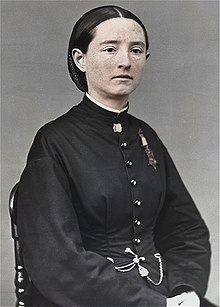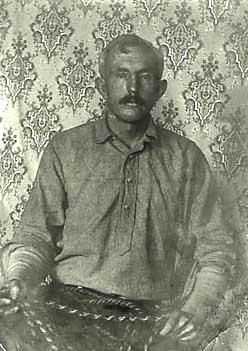This is a small book and a quick read, but packed with some fantastic information about the Apaches. These guys were certainly masters of guerrilla warfare back in the day, and definitely gave the Mexican and American forces a run for their money.
As to the tactics discussed, and what led to Apache success in the face of such large forces, is what I was most curious about. I was also really interested in what eventually ‘defeated’ the Apache. Books like this help to understand what makes for a successful guerrilla force, and also helps to understand today’s enemies. It is fun to read this stuff, and compare it to other successful guerrillas campaigns in history. Or compare it to the wisdom of Sun Tzu or Boyd. (like attacking weakness with strength, Cheng and Ch’i, etc.)
The Apache were really into raids in order to maintain their stores of weapons and ammunition. By attacking and taking horses or cattle, or anything else of value that could either be used or sold, they could further sustain their way of life and war out in the field. So raids were a big part of their thing.
If Apaches were killed, then ‘attacks’ or ‘ambushes’ would be in order to get revenge. So raids and attacks went hand in hand for the type of guerrilla warfare they waged.
They were also keen on how to attack the large cumbersome forces of the Mexicans and Americans. Many of the attacks the Apaches conducted involved decoys or trying to sucker these large forces to pursue these small bands of warriors. They would try to anger the forces, and let that anger cloud out their better judgement. Meaning, if they could get a troop of cavalry to chase them into a narrow canyon or into really rough terrain, the Apache then could ambush those forces in advantageous terrain.
By getting these forces to pursue in rough terrain would also destroy their horses and mules. The Apache knew that if they could destroy those animals, they could take away the mobility of the cavalry. They could get those soldiers on the ground, and on the ground is where the Apache really shined. Matter of fact, the Apache also targeted the mounts during ambushes, just to destroy that unit’s ability to be mobile. (the book discussed how many horses and mules the Army lost during those years, and it was very significant)
Once their target was without a horse or mule, they could then apply their ground game to annihilating this force. That’s if that force was not prepared to fight on the ground. The Apaches were smart fighters, and they knew when to fight and when to go. But they weren’t really going anywhere. If anything, they would break contact and hope that the enemy would chase them, all so they could ambush them again. Hit and run, hit and run, hit and run…. And it is that process that would weaken a large force that is highly dependent on carried supplies and horses/mules, and does not have the stamina or fighting skills or knowledge of terrain to compete with the Apache.
Other tactics used were decoy methods. They would have a lone woman act like she was caught in the open and start running away if a force spotted her. The hope was that the force that spotted her, would give chase. Then the Apache could ambush that force as they get sucked into an ambush. They would try anything and everything to get these forces to chase them into ideal ambush sites.
They would also attack in areas where their prey would not suspect, just to keep their ambushes unpredictable. Like attacking on flat ground as opposed to compressed canyons that look perfect for ambushes. Or they would position ambushers in areas just on the other side of small canyons, knowing that a force would think they were in the clear once they reached the other side. The point was to attack the enemy when they least suspected an attack–when they were at their most relaxed and unguarded.
Some other cool little tidbits included the Apache method of attacking communications. The telegraph was key to the Indian Wars and the expansion out west. You could call up more reinforcements, or communicate that you needed more ammo. You could also give quick intelligence reports via telegraph as to the location and size of enemy formations. The Apaches knew all of this, and they frequently targeted the telegraph wires/poles.
The method they used was to cut the wire close to the tree or pole, then reconnect the wire with leather strapping to make it look like it was still connected in the tree or pole. That way the repair crew would have to climb every pole and tree, just to see where the line was broken. lol This tactic would help to frustrate those who depended upon the telegraph, and drain more resources for the ‘secure’ repair of these lines.
As to Apache brutality, they had plenty there. One of their favorite methods was to cook their captives to death on a tree or wagon wheel over a fire. The idea was that they wanted folks to ‘fear’ them, which would also help in ambush or raids in the future. If a homesteader feared being tortured if caught, they would run away during an attack, and the Apache could take the horses and cattle. In the thirties, they did more of this type of thing, but later on in the war they did not have the time for this stuff because they were always on the move. They would just kill prisoners on the spot or not even care to take prisoners, and move on.
The Apache would also stick around after the ambush. A force might see the dead and be compelled to think that the Apache were long gone, or that force would be driven by emotion to rescue or bury the dead–and then the Apache would ambush that force. Or they would purposely let a survivor of the ambush run back to the fort, just so a rescue force would come out. Anything to anger that force, and get them to chase the Apache into prepared battlefields.
I also thought it was cool that the Apache culture was very much geared towards this kind of warfare. You could not be a warrior until you completed four raids. Leadership positions were based on merit. That successful operations with minimum casualties and lots of loot captured was the key to becoming the head honcho. Hunting and tracking was a way of life, and stamina and the ability to run long distances in brutal terrain was something the Apache trained for and celebrated. These guys were truly the ultimate guerrillas.
Finally, and this is the part of the book that I really enjoyed. What ‘defeated’ the Apache? There were three areas that led to their defeat. One was attrition–or just losing folks due to constant warfare over the years. Eventually their numbers began to dwindle and they just could not sustain the fight against Mexico and America in the border areas.
The next area was ammunition. It became increasingly harder for them to get enough ammunition, and especially if they were constantly on the run. They had to depend upon raids and buying ammo and weapons from arms dealers, and because the Apache was not organized logistically to help disperse this loot to all other friendly tribes, that war fighting suffered. So what is true for large armies, was true for these fighters. Beans and bandages were easy for the Apache, but bullets is something they had to depend on others for. You saw this in Libya as well, and getting organized and having a steady source of good ammunition and weapons is vital to sustain combat.
The final area that was identified, and the one that I have touched on in the past, is the use of Apache Indian Scouts to fight Apaches. It is odd to think that Apache would hunt and kill Apache for the Mexicans or Americans, but they did. The hatred they had for other Apache tribes was strong enough where they would join forces with the Mexicans or Americans so they could defeat those other tribes. It is these tribal wars and feuds that were used to great advantage by the Mexicans and Americans to defeat them all.
These Indian Scouts would also require management that knew the land and how to track just as well as they did. Contractors like Tom Horn or Buffalo Bill Cody were hired as guides by the US Army and used as Chief of Scouts for these Indian Scouts. These men were the guys that understood the ways of these various tribes, and could keep tabs on what their scouts were really up to. Plus, these men lived in these areas and their profession was scouting. The military units would cycle folks in and out of these areas, and new officers would need advisers who knew how to fight Apache.
The cavalry units were highly dependent upon that system of Indian Scouts in order to fight the Apache. In other words, it takes an Apache to find and defeat an Apache.(echoes of ‘it takes a network to defeat a network‘) It is how Geronimo was found and forced to give up, and this war of attrition wore down the Apache into defeat.
Pretty cool stuff and I recommend this book. One thing I will not give away and allow the reader to check out on their own, is the Apache’s choice and use of weapons. Fascinating stuff, and the book covers a very interesting angle on their tactics and lethality with such tools. Nor will I give up how they were able to evade the forces hunting them and what tactics were used to ensure survival.
I have put this publication in the Jundi Gear locker if anyone wants to come back to it in the future and it would make a fine addition to anyone’s military history collection. Also, I have put the Kindle e-book version in the locker as well, and you can check that out at this link. –Matt
About the Book
Publication Date: January 24, 2012
The Apache culture of the latter half of the 19th century blended together the lifestyles of the Great Plains, Great Basin and the South-West, but it was their warfare that captured the imagination. This book reveals the skillful tactics of the Apache people as they raided and eluded the much larger and better-equipped US government forces. Drawing on primary research conducted in the deserts of New Mexico and Arizona, this book reveals the small-unit warfare of the Apache tribes as they attempted to preserve their freedom, and in particular the actions of the most famous member of the Apache tribes – Geronimo.
About the Author
Dr Robert Watt is a lecturer at the University of Birmingham where he teaches a course on the Indian Wars for the History Department. He has previously published a number of articles for American history journals on both the Apaches and their campaigns throughout the 19th century and has travelled widely throughout Arizona and Mexico researching the subject.
Buy the book here.
Buy the Kindle e-book version here.



